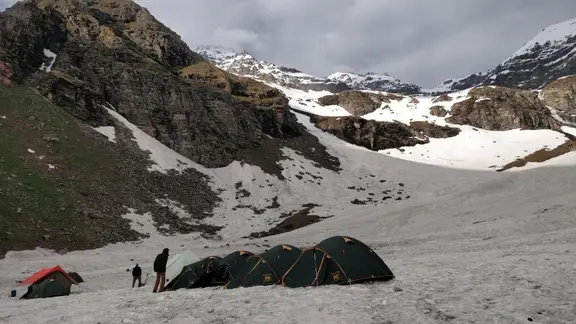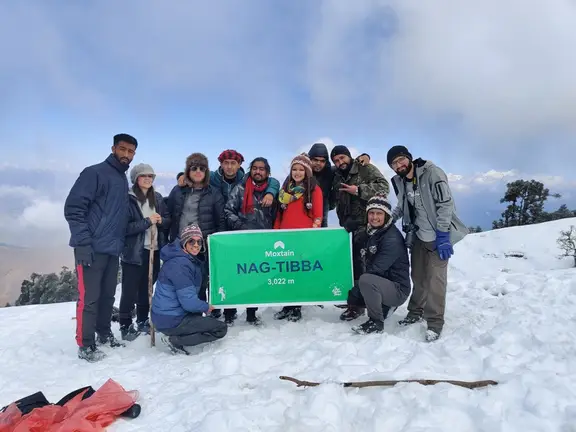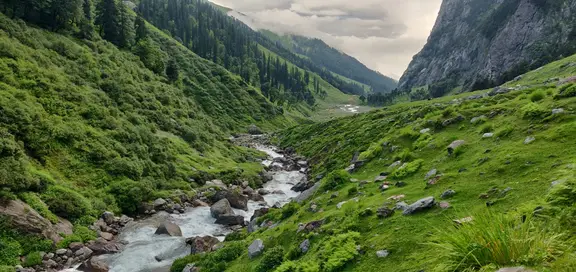Reason Why You Shouldn't Miss Kedarkantha Trek
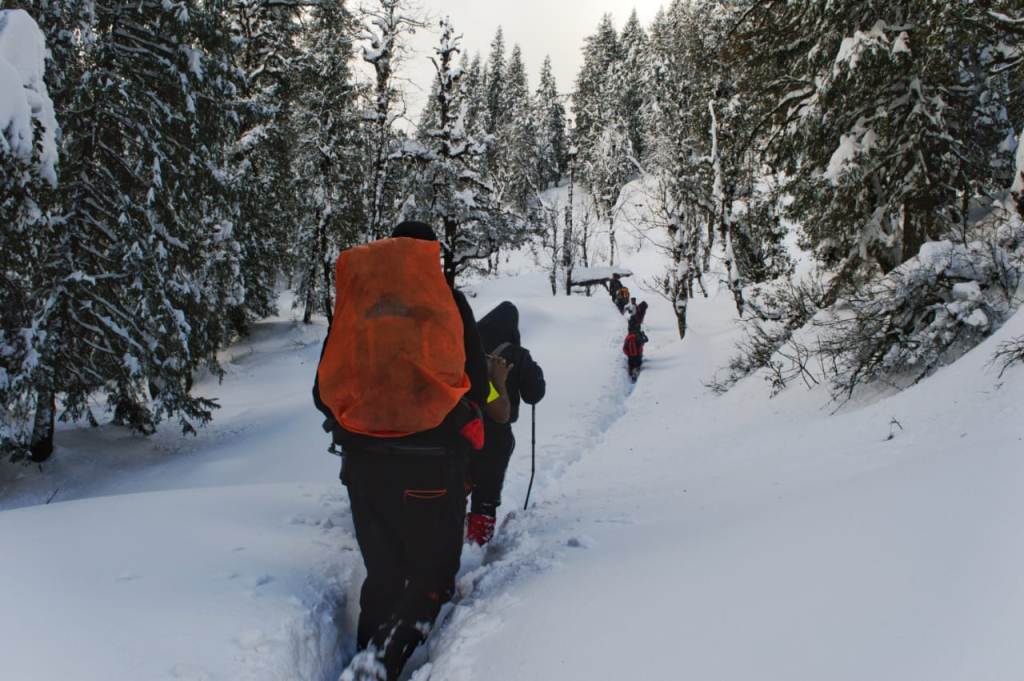
If you are planning to partake in a trek to the enchanting and mysterious mountains of Himalayas but are still unsure about which summit you wish to explore and conquer this winter, then allow me to introduce you to one of the best, proven and tested, winter treks you could ever go on. The Kedarkantha winter trek is simply a perfect package, you will encounter frozen lakes, verdant thick forests of oaks, pines, silver fir with their exotic flowers and cones. A myriad of endangered and endemic birds and animals, three campsites with unparalleled views of snow-covered peaks and valleys, a shrine of the Lord Shiva, at the summit. Read on to get a picture of the delightful experience you will have on this trek.
Here are some reason to do Kedarkantha trek in winter
Unforgettable Drive to the Base:
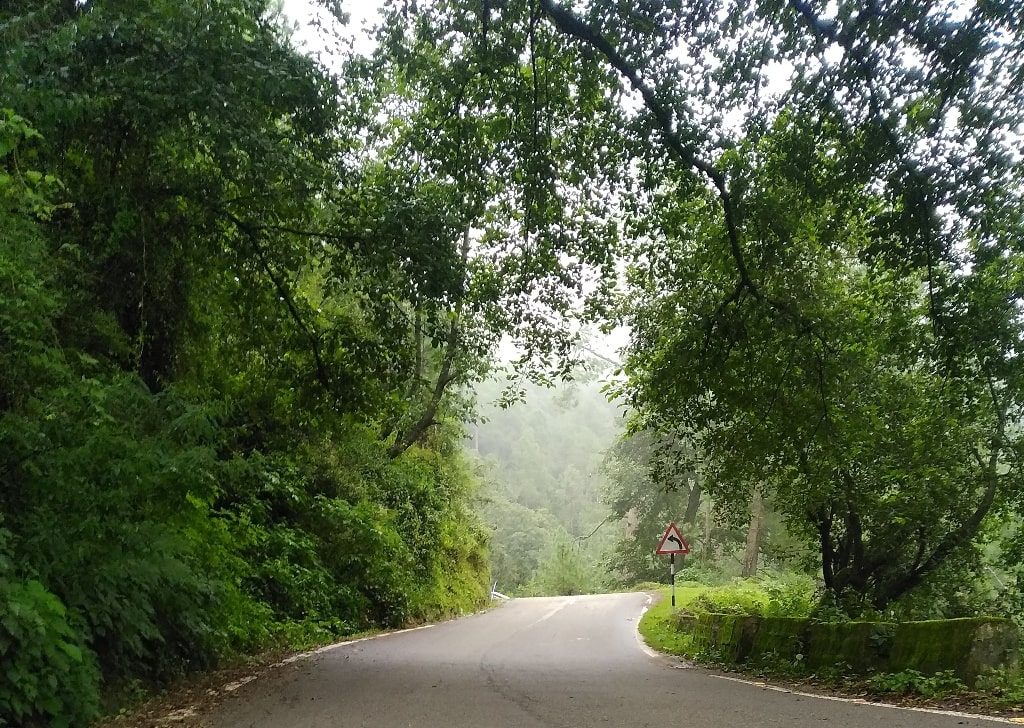
- The trip to Kedarkantha starts from the charming little village of Sankri. A thrilling and calming drive from Dehradun taking around 10 to 11 hours will bring you to Sankri. The route, around 220 kms long, traces its way through Mussoorie, Damta, Naugaon, Purola, and Naitwar. This long drive through the hilly arms of nature is perfect to prepare you for the wonderous trek ahead.Your path will snake through lush forests and pass by melodious rivers. This long drive is in itself so beautiful, you can imagine how interesting the kedarkantha trek route will be.
A Snowy Paradise (Snowfall till April):
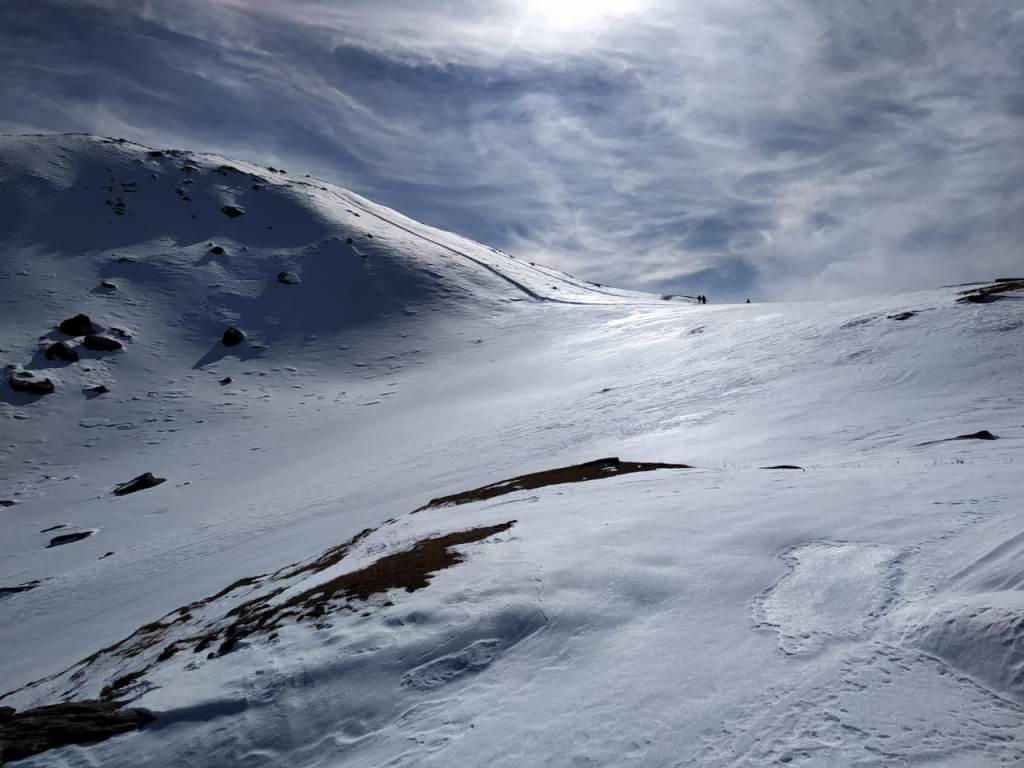
- Kedarkantha trek stands out from the other winter treks of the Himalayas as this is the only place where you can experience trekking the snow-clad mountains and terrains even in the month of April. If you have missed an opportunity to partake in a trek during the winters, from December to March, then plan a trip to Kedarkantha right away to experience winter and snowfall even in the summer month of April.
- During the winters, the entire trek is transformed from the mountains, valleys, and lakes to the forests, birds, and animals. This adds another layer of unmatched beauty to the trip. The region where you will be trekking receives plenty of snowfall throughout the months from December to April. With temperatures during the day, ranging from -7 degrees Celsius to 2 degrees Celsius and at night, ranging from -10 degrees Celsius to -18 degrees Celsius, the sylvan lands are covered with a furry coat of snow creating a paradisiacal land in the Himalayas for all its adventurers.
- For all the trekkers out there looking for an extra rush of adrenaline. Kedarkantha trek brings along with it a chance at skiing over the powdery blanket of snow meadows steering clear of the oak and pine trees is just what you need. The heavy snowfall in the region makes for perfect skiing grounds. Along with this the deep valleys, meadows, and terrains with their undulating slopes give you the chance to dive with the chill air and touch the sky with your ski blades on your way up. The cherry on the top is the fauna this region is bestowed with, the towering trees powdered with snow in and around your path makes this not only an adventurous but also a picturesque endeavour.
Trek to a Frozen Lake:
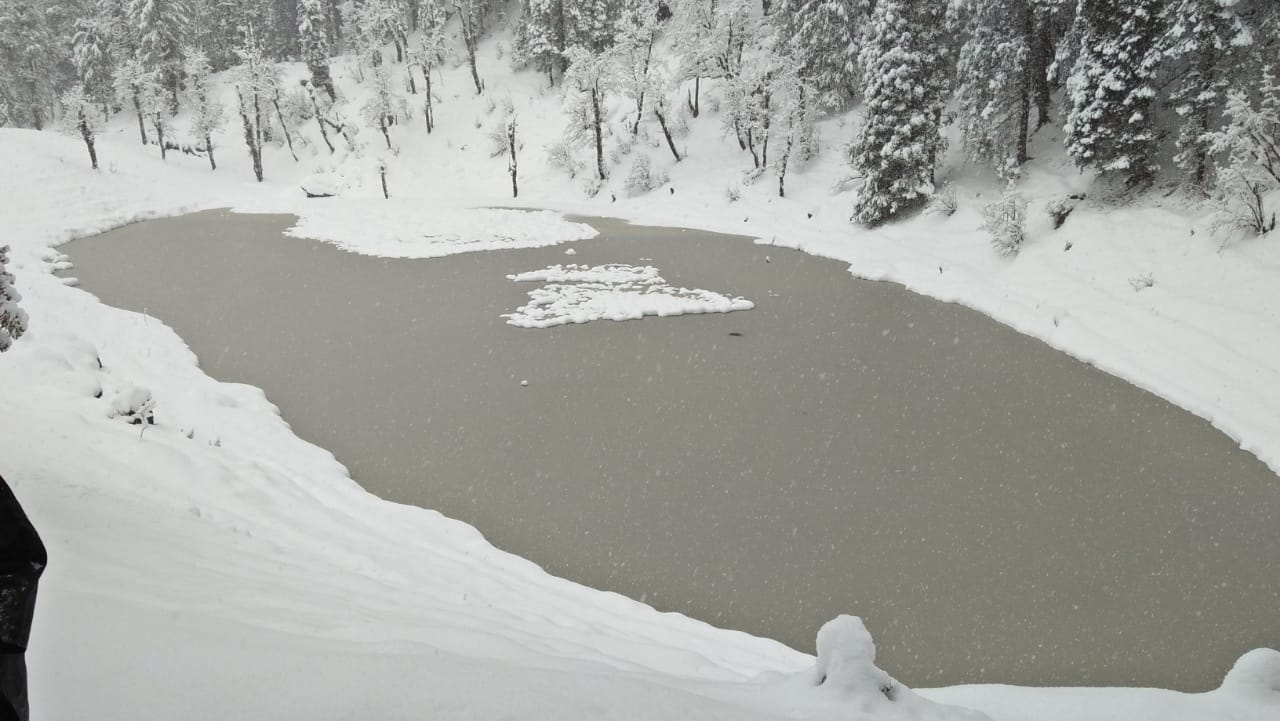
- What makes a trip to Kedarkantha peak one of the most exhilarating winter treks of the Himalayas is the unique location of one of its camps.
- Juda ka Talab Lake hidden at an altitude of 2700 m, is believed to have been created by the god, Shiva. The story goes like this, Shiva let down his long locks of hair that held the goddess of the river Ganga near the spot, a drop of the river spilled and touched the earth and eventually, the Juda lake we see today was formed. The name came from the god’s hair which he would usually keep tied up into a bun or Juda, hence, known as Juda Ka Talab. The lake offers some wonderful views of the mountains and terrains closeby. The peaks of Swargarohini and Kedarkantha can be spotted from the site.
Witness the Exotic Wildlife of the Himalayas:
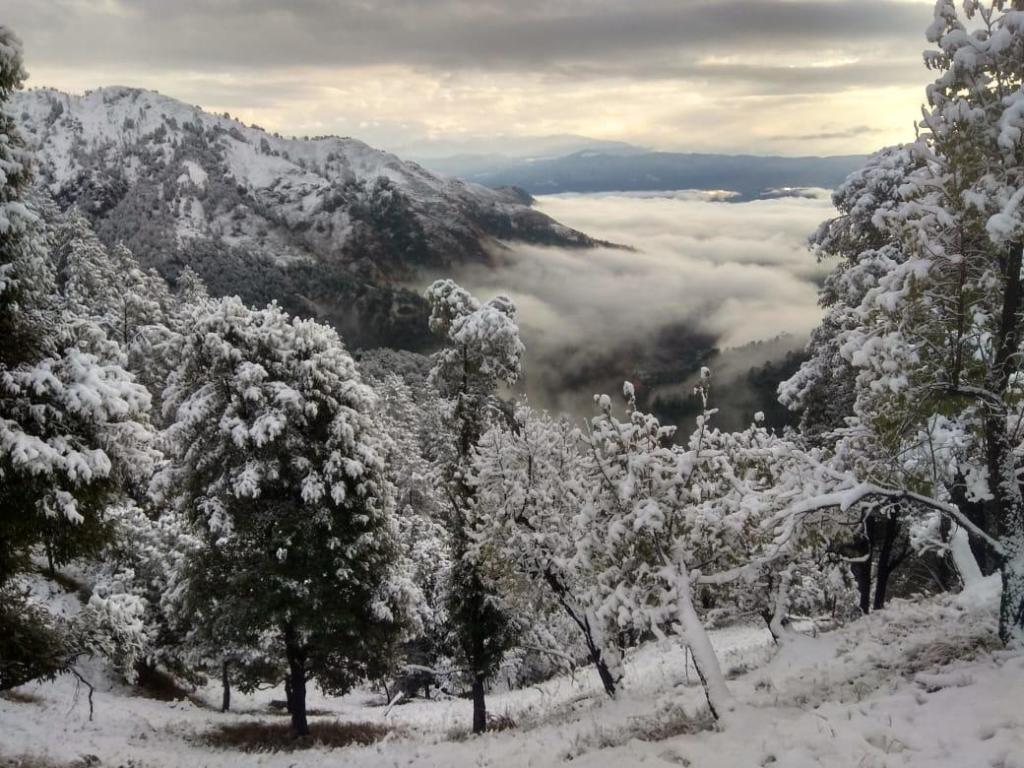
- A trek to the Uttarkashi peak of Kedarkantha nestled in the vast expanse of Govind Wildlife Sanctuary is bound to treat its visitors to the wonderful endemic wildlife of the Himalayas.
- The mesmerizing lake of Juda and your destination, the summit of Kedarkantha, perched at an altitude of 2700 m and 3810 m respectively, are both located amongst the lush flora and fauna of the Govind Pashu Vihar. A package of endless amusements for the curious photographers, for those with a keen eye indulging themselves in bird watching and simply for the ones with a passion and sense of appreciation for the Himalayan gems.
- The flora of this region is a sight to behold during the winters. The Himalayan silver fir with its rich violet coloured cones and hefty green branches, the trees of Rhododendron with it’s cherry-like red and pink flowers, the majestic deodar cedar trees with its auburn and golden cones, the sky-touching banj oak, chir pine with its hairy young green-leafed arms, are some of the species of fauna endemic to the Himalayas of Uttarakhand that you can find in your trip.
- One of the most exotic and rare Himalayan birds, the blood coloured Western Tragopan habitats in this region. Other endangered and endemic birds such as the Bearded Vulture, Steppe Eagle, Golden Eagle, Black Eagle, Monal, Himalayan Snowcock, warblers, thrushes, minivets, finches and many more can also be spotted here.
- Perfect for photography and exploration, the sanctuary houses rare and exotic species of fauna like the Himalayan Black Bear, Brown Bear, the brown-haired Thar, Himalayan Blue Sheep, Himalayan Serow, Himalayan Crestless Porcupine and the endangered grey ghost of the mountains, the Himalayan Snow Leopard. Dwindling numbers of these snow leopards and a few other animals are what caused the government to establish this sanctuary.
Breathtaking Camping Sites:
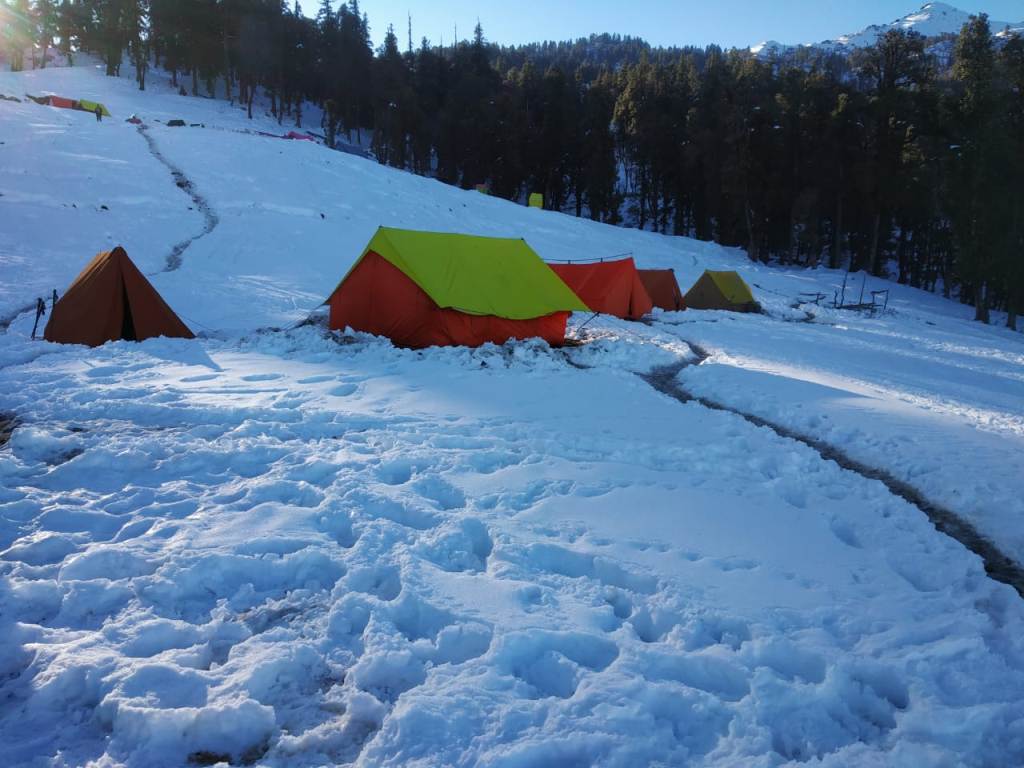
- The camping spots of the Kedarkantha trek is what distinguishes it from other trekking trips and makes it more alluring. The snowy winters of the state set up a perfect stage not only for a breathtaking winter trek but also for a soothing and immersive camping experience. There are three stops on the trip, the first involves setting up a scenic camp near a frozen lake, Juda Ka Talab, the second is Kedarkantha basecamp and the third is the camp at Hargaon on the way back to Sankri.
- The first campsite popularly known as Juda Ka Talab, the lake is a sight to behold when it snows in the region. Your path from the hamlet of Sankri to the Juda lake gives you a glimpse of the journey you have endeavoured to take into this heavenly niche of nature. A pristine carpet of ice embellished with emerald and jade, along with the cold feathers of breeze that will brush your face ever so softly will be your trail to the lake, you can walk over it and feel the thrill of standing directly on top of a cavity hundreds of feet deep.
- The second camping site is a soothing fairytale meadow situated at a distance of around 4 kms from the lake of Juda. The trail to the Kedarkantha base camp from your previous campsite runs through tight forests of pine and oak embedded in steep terrains and will take you around 3 to 4 hours to reach. Kedarkantha Base camp nestled at a height of around 3430 m above sea level, this is one of the best spots to set camp up at.
- On your way back to Sankri, you camp at Hargaon which is at an altitude of around 2713 m. The view of the mountains from this site is mesmerizing as they resemble towers of gold under the setting and rising sun.
Unparalleled Views:
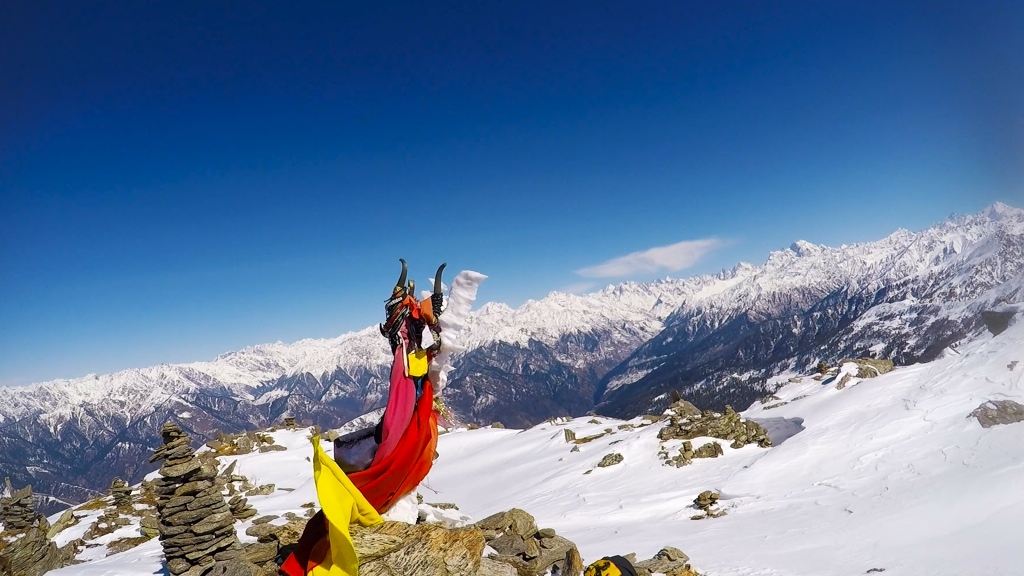
- The summit of Kedarkantha standing at an altitude of around 3810 m is indescribably enchanting. The mountain top offers a bird's eye view to the surrounding mountain ranges and valleys. A keen eye can help you spot the thirteen ranges of mountains that can be observed from this strategic spot. The famous snow furred peaks of mountains Swargarohini (all of the four peaks), Bandarpoonch, Kalanag, Dhaula Dhar and the ranges of Gangotri and Yamunotri are visible from the panoramic top. Along with these peaks, numerous unexplored virgin mountain ranges and passes like the Rupin Pass and the valley of Har Ki Dun standing in stark white light against the azure skies is truly a sight of a lifetime.
- As if this wasn’t perfect enough the mountain of Kedarkantha bears a shrine of the god, Shiva, at its peak.
A Touch of Expedition:

- The Kedarkantha trek with its views to virgin and unexplored valleys and peaks gives you a feeling that you are on an expedition. A trek during the winter lays an untouched snow-laden path in front of you waiting to be experienced and explored.
- You stay the night in pitched up tents in the wild and wake up before the sun at 4 AM the next morning. The climb is steep but can be undertaken even by rookies with a little physical training to prepare themselves. This is what makes this trip all the more enjoyable for trekkers as they can undertake this trip even without a guide allowing them to have a learning experience and giving them a sense of satisfaction for completing the trek all by themselves.





